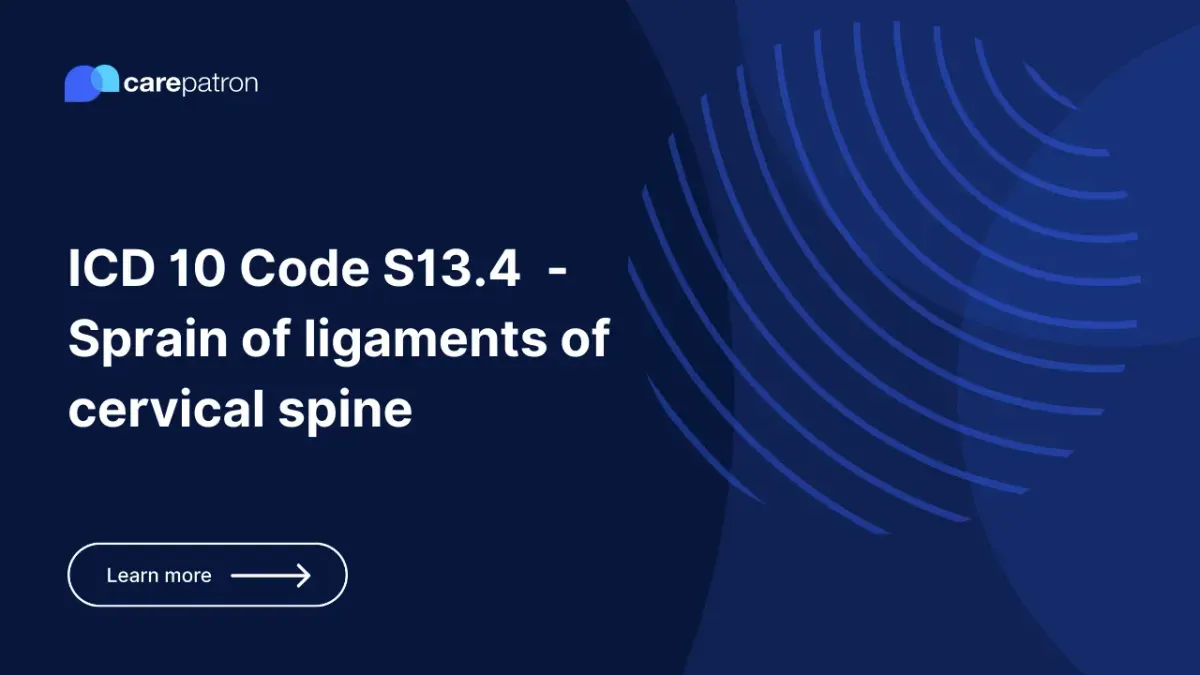
S13.4 – Sprain of ligaments of cervical spine
The ICD-10-CM code S13.4 is used to diagnose a patient with a sprain of ligaments of their cervical spine. Learn what this code entails, from its clinical information, if it’s billable or not, FAQs, and even related ICD-10 codes by reading this short guide.
Use Code
Commonly asked questions
No, this ICD-10 code is not billable because it is a non-specific ICD-10 code.
It means that the patient is confirmed to have cervical spine ligament sprains, but it isn’t specific regarding the encounter (initial or subsequent). It’s best to use more specific codes like S13.4XXA (initial encounter), S13.4XXD (subsequent encounter), or S13.4XXS (sequela).
Resting, exercise, physical therapy, pain relievers, and muscle relaxants.
EHR and practice management software
Get started for free
*No credit card required
Free
$0/usd
Unlimited clients
Telehealth
1GB of storage
Client portal text
Automated billing and online payments
